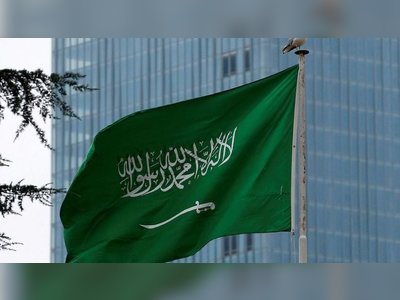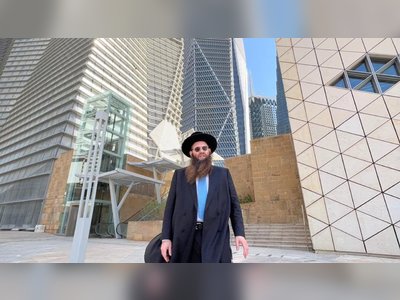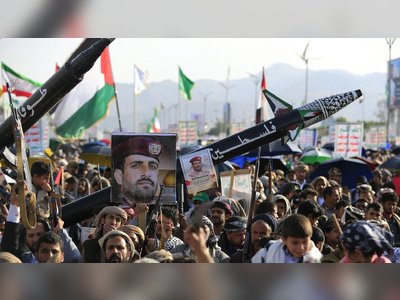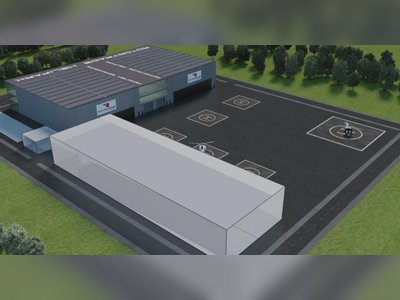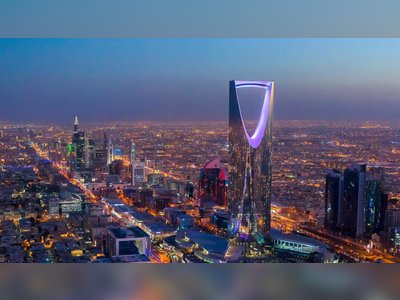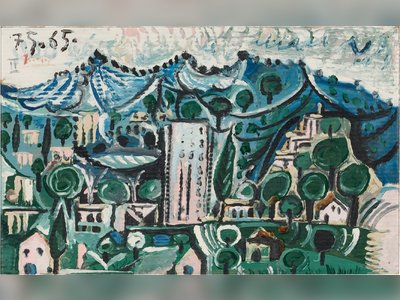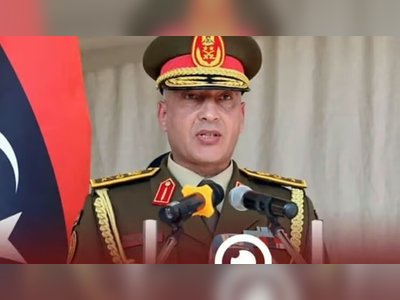
Two months in, Yemen presidential council still faces uphill task
Yemen has seen two months of relative quiet since a truce between the country’s Saudi-backed internationally recognised government and the Iran-aligned Houthis warring parties began in early April.
The truce, which was renewed for a further two months on Thursday, has allowed for the focus to shift slightly from the military to the political arena – where a shake-up on the part of the government, and the introduction of a Presidential Leadership Council (PLC), has worked to unite Yemen’s anti-Houthi coalition.
The PLC was introduced in early April, when former President Abd-Rabbu Mansour Hadi, conceded power to an eight-member council, led by Rashad al-Alimi.
The move lay the groundwork in an effort to create a united force, with one voice and a joint strategy, to counter the Houthis, who have largely had the military ascendancy in the past two years of war.
Yemen’s war began in 2014 when the Houthis took the capital, Sanaa. A Saudi-led coalition intervened on the side of the government in 2015, and has conducted an air strike campaign since. The war has resulted in the world’s worst humanitarian crisis, according to the United Nations.
One of the stated goals of the PLC has been to end the war, but divisions on the anti-Houthi side of the conflict have long been a barrier to both military victories on the battlefield and peace negotiations.
The PLC, however, unites politicians from Yemen’s north and south, including the leader of a group that calls for the secession of southern Yemen.
The council also shoulders numerous other responsibilities related to the economy, security and public services, all of which are in dire straits after more than seven years of war.
So far, the scene remains quiet in Aden, where the PLC is based.
The council has put a lid on infighting in areas of the country not controlled by the Houthis, but integrating Yemen’s diverse anti-Houthi armed groups into a unified armed force remains a problematic mission, according to the director of the Abaad Studies & Research Center, Abdulsalam Mohammed.
“The process of bringing the Yemeni armed units opposed to the Houthis under a single leadership is a challenging task,” Mohammed told Al Jazeera. “This matter cannot materialise overnight. Achieving this needs gradual implementation and unwavering cooperation from the concerned figures and commanders who are part of the leadership council.”
The devastating seven-year war has fragmented Yemen and presented fertile ground for the proliferation of armed groups and militias.
At the start of the war, the main rivals were the Houthis, backed by late President Ali Abdullah Saleh’s forces, and the Yemeni government. As the conflict progressed, a third rival, the United Arab Emirates-backed separatist Southern Transitional Council (STC), came to the fore in 2017, eventually leading to conflict with Yemeni government forces.
The STC calls for the return of South Yemen, the country that united with North Yemen to form the unified Republic of Yemen in 1990.
Mohammed indicated that while pro-government forces would not defy the instructions of the PLC, along with forces led by Tareq Saleh, another UAE-backed commander who switched sides from supporting the Houthis earlier in the war, the same was not for certain with the STC.
“Forces loyal to the STC have regional agendas, and there is difficulty dealing with them.”
Military restructuring
On Monday, the PLC formed a new military and security committee composed of 59 members.
According to a government statement, the committee is tasked with establishing security and stability, restructuring the military and security forces, and fending off internal confrontations in Houthi-free areas.
The announcement of the committee has been heavily focused on by Yemeni media outlets, as many thought that a restructuring of the country’s armed forces, and the formal inclusion of STC forces under the command of the Yemeni government, would force southern separatist forces to drop the idea of parting from Yemen’s north.
However, Adel Dashela, a Yemeni political researcher and author, doubts that a reshuffling of Yemen’s armed groups in this manner can practically be done.
“The formation of a military and security committee is a positive step,” Dashela told Al Jazeera. “The question that remains unanswered: what is the mechanism of integrating all these forces?”
Dashela argued that anti-Houthi armed groups pledge allegiance to different leaders and countries, which hinders their integration, and ultimately the unity and sovereignty of Yemen.
“The STC is clearly under regional and international pressure. However, it will likely pull back [from working with the Yemeni government] should the forces integration mechanism be implemented since the STC does not believe in the vision of a unified Yemen,” Dashela said.
Houthi fears
For the Houthis, in Yemen’s north, any unity between their opponents is a worrying prospect.
Recurring infighting between pro-STC fighters and government forces has served the Houthis well during the past five years.
Should the PLC spell an end to anti-Houthi infighting, and peace efforts break down, the Houthis may face a different type of enemy, and one that is harder to defeat, according to Dashela.
“If the divisions between anti-Houthi forces vanish, this will pave the way to peace and pressure the Houthi movement. This movement will not be capable of facing a unified Yemeni state.”
For the southern separatists, fighting with the northerners to dislodge the Houthis is a matter of practical need, rather than any change in goals, and many reject the dismantling of their forces in its entirety.
On Tuesday, Mansour Saleh, the deputy head of the STC’s media department, described the notion of the full “integration” of the STC’s forces into the government’s forces as “unacceptable”, while being open to more unity between the two sides.
“The mission of the military and security committee is to accommodate all forces under the umbrella of the defence and interior ministries, securing their salaries and replacing the two ministries’ leadership with a new one … to confront the Houthi militia,” Saleh wrote in a tweet.
In the Khormaksar district of Aden, the main city in Yemen’s south, Fawaz Ahmed, a 35-year-old resident, said that the reality of the situation on the ground meant that it would be hard for the PLC to gain the allegiance of the STC.
“I cannot imagine the disappearance of the southern flag in Aden or the hardcore supporters of secession going silent,” Ahmed told Al Jazeera. “The leadership council can placate the southern separatists for some time, and the internal divisions may decline. But the rifts are difficult to remedy fully.”

